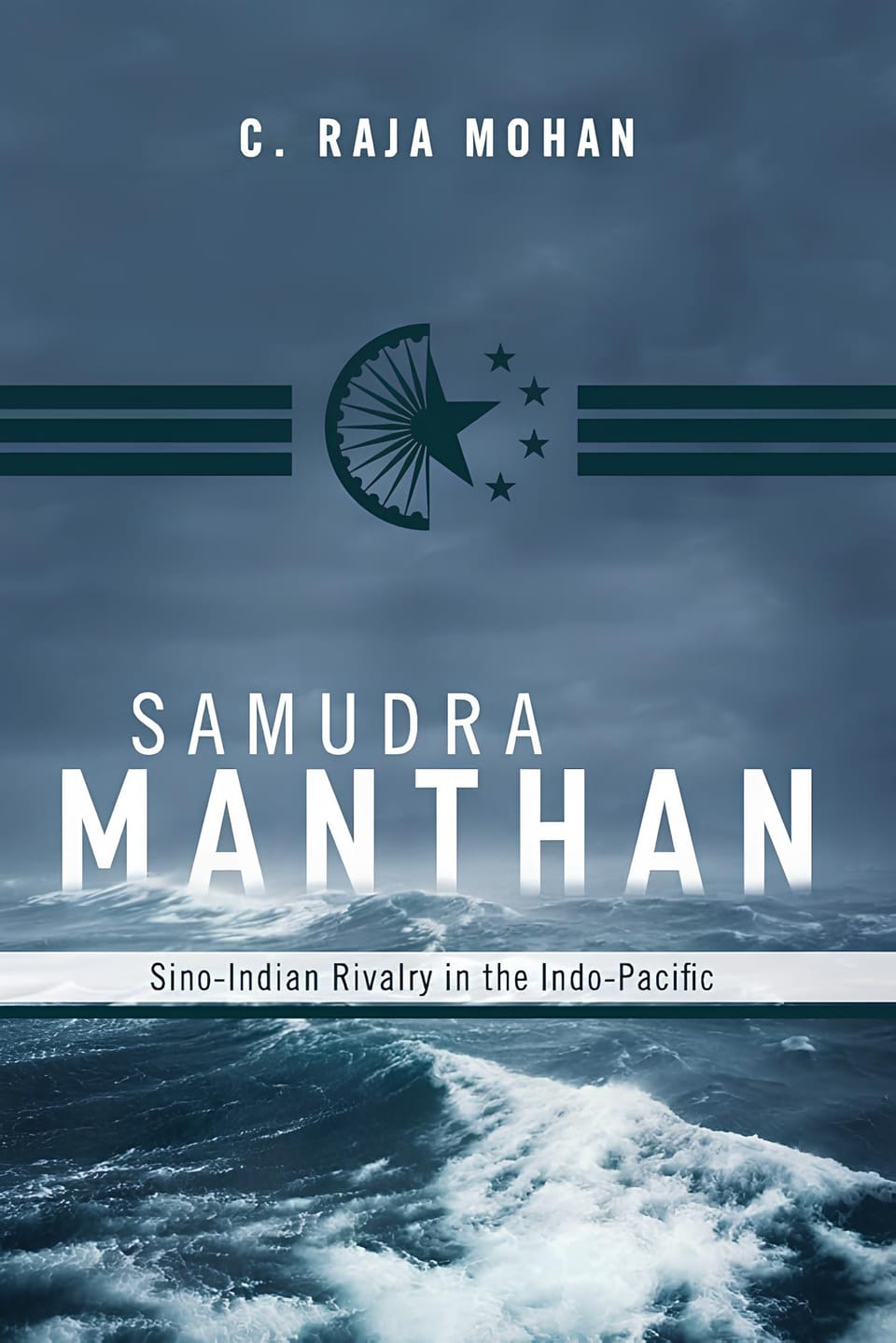Sino-Indian Rivalry in the Indo-Pacific

Book Analysis
Many Indian works focus on Sino-Indian competition in general, and specifically on the maritime theater. "Samudra Manthan: Sino-Indian Rivalry in the Indo-Pacific" by C. Raja Mohan is a concrete example. This renowned Indian political scientist has written extensively on India's rise. He identifies numerous points of rivalry between India and China in the Indo-Pacific region. Both countries pursue ambitious naval policies to build fleets that symbolize power, including aircraft carriers, nuclear-powered submarines, and blue-water navies. These fleets are meant to secure their maritime supply routes in the Indian Ocean and Southeast Asia, strengthen naval diplomacy by flying their flags during port calls in regional countries, and ensure nuclear deterrence.
For Raja Mohan, China's expansion into the Indian Ocean is one of the primary sources of rivalry between the two countries. China has developed close ties with many nations historically linked to India. In Sri Lanka, it helped build a deep-water port, it is drawing closer to Mauritius through bilateral agreements, and it has established naval outposts in Djibouti. Finally, Beijing has historically been close to Pakistan and is increasingly strengthening ties with Bangladesh, a country supported by New Delhi during its fight for independence in 1971.
It is interesting to read this book not so much for the author's thesis, but rather to gain an insight into the views of Indian elites on Sino-Indian relations.
Many Indian books focus on the Sino-Indian rivalry, whereas Chinese articles and books tend to discuss the Sino-American rivalry more frequently. For the Chinese, India is seen as a regional competitor, while they view themselves as rivals to the United States. It is true that the rise of the two navies is not comparable. China has developed domestically-built aircraft carriers and nuclear-powered submarines. Quantitatively, the Chinese navy is twice the size of the Indian navy. On a diplomatic level, China has penetrated India's sphere of influence through active economic diplomacy, notably by financing projects through loans.
For India, asserting itself as a strategic competitor is a goal in itself, as it would give it the stature of a political and military alternative to Beijing in Asia. However, this challenge seems out of reach for now, as the dynamics between the two countries have been evolving at different speeds for the past 30 years.
Biography of the author
C. Raja Mohan is an Indian academic, journalist, and foreign policy analyst. He is currently the director of the Institute of South Asian Studies at the National University of Singapore. Raja Mohan was the founding director of Carnegie India and has held several prestigious positions, including Distinguished Fellow at the Observer Research Foundation in New Delhi and Senior Fellow at the Centre for Policy Research.
Raja Mohan is widely recognized for his analysis of international relations, particularly those involving India and major global powers. His approach to foreign policy is liberal and pragmatic, advocating for closer ties between India, the United States, Russia, and China. He has also emphasized the importance of economic relations in improving India's ties with its neighbors, including Pakistan.
He is the author of several books, including "Crossing the Rubicon: The Shaping of India's Foreign Policy," "Impossible Allies: Nuclear India, United States and the Global Order," and "Samudra Manthan: Sino-Indian Rivalry in the Indo-Pacific." Raja Mohan has also been a columnist for leading newspapers such as The Indian Express and The Hindu.
Summary of the book
"Samudra Manthan" examines the growing rivalry between India and China in the Indian Ocean and the Pacific, a strategic region referred to as the Indo-Pacific. Mohan explores the strategic, economic, and political interests of both countries in the region, focusing on the evolution of their maritime policies. He also analyzes the implications of this rivalry for regional and global security.
The book discusses how China's naval expansion and its "String of Pearls" strategy are altering the balance of power in the Indo-Pacific. This includes the impact on maritime trade routes and China's increasing influence in the Indian Ocean.
Mohan describes how India responds to China's maritime expansion by strengthening its naval capabilities and seeking strategic partnerships with other regional players, such as the U.S., Japan, and Australia. He examines India's efforts to protect its maritime interests and secure its trade routes.
The book also explores the consequences of this rivalry for Southeast Asia, the Pacific, and beyond. Mohan delves into the alliances and counter-alliances forming in response to the competition, as well as the impact on maritime security, international trade, and global politics.
He also contextualizes this rivalry by examining the respective naval histories of India and China, along with the military doctrines that guide their current strategies.
The book concludes with a discussion on how India and China might coexist in this strategic region, highlighting the challenges of coexistence, including the risks of conflict and the need for dialogue and crisis management mechanisms.